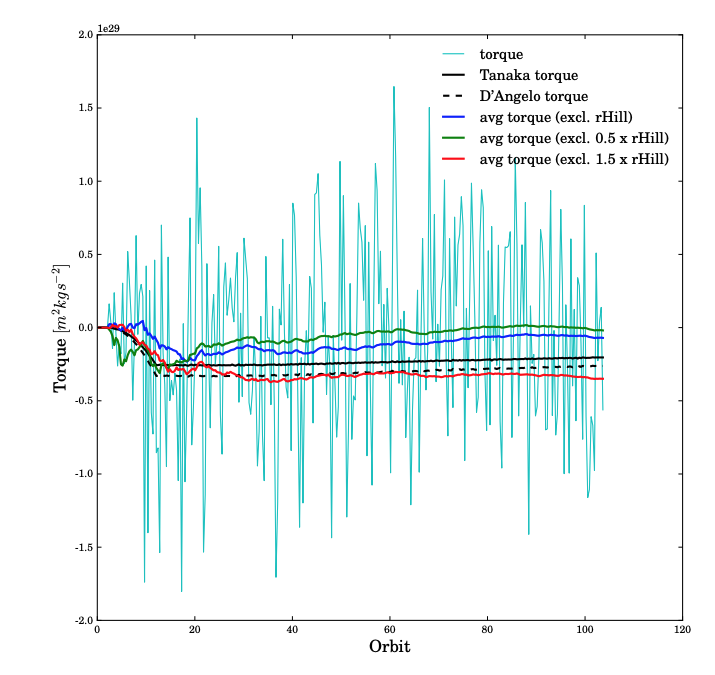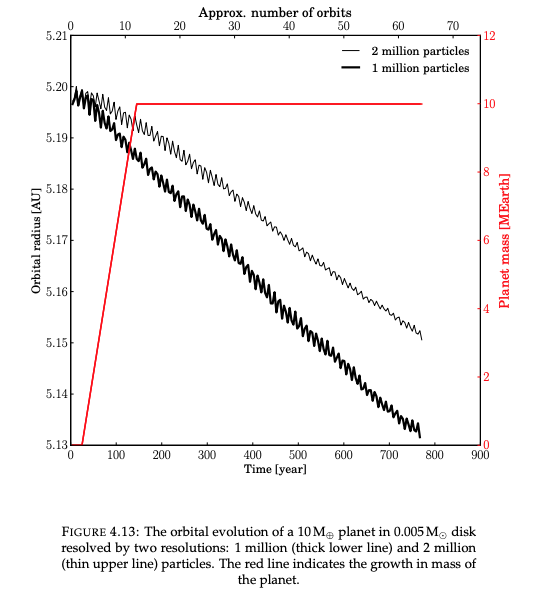Migration in gravitationaly unstable protoplanetary discs
JAXA Supercomputer System Annual Report April 2020-March 2021
Report Number: R20ECWU00
Subject Category: Cooperative Graduate School System
- Responsible Representative: Elizabeth Tasker, Associate Professor in the Diviion of Solar System Science at ISAS / JAXA
- Contact Information: elizabeth.tasker@jaxa.jp(elizabeth.tasker@jaxa.jp)
- Members: Elizabeth Tasker, Ngan kim Nguyen
Abstract
A long standing problem in planet formation theory is how the orbits of young planets change due to the drag of the gas still surrounding young stars. This project explores how gravitatonal structures (e.g. spiral arms) in the gas disc can affect this migration process. By modelling the motion of a planet in a gas disc around a star, we hope to demonstrate that the orbit of the planet depends on structures in the gas, thereby suggesting that different discs can result in different planet periods.
Reference URL
N/A
Reasons and benefits of using JAXA Supercomputer System
The tools needed for this project are three-dimensional hydrodynamical simulations, run on several hundred cores. This is beyond what is possible on a desktop computer. The code used (ChaNGa) is designed for supercomputer facilities parallised with MPI,. Many different simulations are needed to see how different disc structures (depending on factors such as cooling and mass) affect the migration of a planet.
Achievements of the Year
Work over the previous year has shown that gas-driven migration for young planets is impacted by the stability of the surrounding protoplanetary disc: a borderline unstable disc forms structures that act as additional torques on the planet. However, the resulting migration rate is influenced by the resolution of the simulation (figure 1). As the ability to run and compare multiple simulations required we keep the computational time down, we needed to determine if the results could be trusted at our desired resolution of about 1 million particles. To do this, we examined the torque on the planet (figure 2). While the instantaneous torque at each time step showed significant fluctuations, the average torque over a region that excluded the Hill sphere directly around the planet was stable. We found that the average torque flattened to a steady value that was comparable to analytical estimate (black lines in figure 2). While the overall migration rate was therefore resolution dependent, the relative impact of the disc could be assessed by comparing average torques on the planet. This allowed the completion of Nguyen Ngan's PhD thesis.

Fig.2: The evolution of the gas torque on a 10 Earth mass planet embedded in a light disc with mass 0.005. The average torque on the planet (average since the simulation start) settles toa roughly constant value, allowing comparisons between runs to be made.
Publications
N/A
Usage of JSS
Computational Information
- Process Parallelization Methods: MPI
- Thread Parallelization Methods: OpenMP
- Number of Processes: 144 - 264
- Elapsed Time per Case: 50 Hour(s)
Resources Used(JSS2)
Fraction of Usage in Total Resources*1(%): 0.06
Details
Please refer to System Configuration of JSS2 for the system configuration and major specifications of JSS2.
| System Name | Amount of Core Time(core x hours) | Fraction of Usage*2(%) |
|---|---|---|
| SORA-MA | 0.00 | 0.00 |
| SORA-PP | 104,770.97 | 0.82 |
| SORA-LM | 0.00 | 0.00 |
| SORA-TPP | 0.00 | 0.00 |
| File System Name | Storage Assigned(GiB) | Fraction of Usage*2(%) |
|---|---|---|
| /home | 7.95 | 0.01 |
| /data | 79.47 | 0.00 |
| /ltmp | 1,627.60 | 0.14 |
| Archiver Name | Storage Used(TiB) | Fraction of Usage*2(%) |
|---|---|---|
| J-SPACE | 0.00 | 0.00 |
*1: Fraction of Usage in Total Resources: Weighted average of three resource types (Computing, File System, and Archiver).
*2: Fraction of Usage:Percentage of usage relative to each resource used in one year.
Resources Used(JSS3)
Fraction of Usage in Total Resources*1(%): 0.00
Details
Please refer to System Configuration of JSS3 for the system configuration and major specifications of JSS3.
| System Name | Amount of Core Time(core x hours) | Fraction of Usage*2(%) |
|---|---|---|
| TOKI-SORA | 0.00 | 0.00 |
| TOKI-RURI | 0.00 | 0.00 |
| TOKI-TRURI | 0.00 | 0.00 |
| File System Name | Storage Assigned(GiB) | Fraction of Usage*2(%) |
|---|---|---|
| /home | 14.31 | 0.01 |
| /data | 143.05 | 0.00 |
| /ssd | 143.05 | 0.07 |
| Archiver Name | Storage Used(TiB) | Fraction of Usage*2(%) |
|---|---|---|
| J-SPACE | 0.00 | 0.00 |
*1: Fraction of Usage in Total Resources: Weighted average of three resource types (Computing, File System, and Archiver).
*2: Fraction of Usage:Percentage of usage relative to each resource used in one year.
JAXA Supercomputer System Annual Report April 2020-March 2021



